The relationship between the forces acting on a physical object/body and the motion of that object/body is described in the famous three laws of motion in Physics, which are known as Newton’s Laws of Motion. These three laws of motion were first described by the famous scientist, Issac Newton, in the 17th century. He then published these laws of motion in his famous work called Philosophiæ Naturalis Principia Mathematica in 1687, providing valuable insights into how objects move and the forces that influence their motion. In this article, we will focus on understanding Newton’s first law of motion, which is also known as the Law of Inertia.
Newton’s First Law of Motion
Newton’s first law of motion states that, “A body at rest or in motion continues to remain in the same state unless and until some unbalanced/external force is applied to it.” So this law helps to explain why the object’s speed is slowed down. Generally, before this theory, it was considered that it is a natural tendency of objects that their speed is slowed down. In simple terms, objects that aren’t moving like to stay still, and objects that are moving like to keep moving, unless something pushes or pulls them in a different direction.
Newton’s first law of motion is also known as the “Law of Inertia”. The first law of motion can, therefore, be simply expressed as: If the net external force on an object is zero, then acceleration is also zero. But if some external force is applied then acceleration becomes non-zero.
Two conditions on which the first law is dependent is tabularized and are further explained below:
| When the Object is at Rest | V =0 and a = 0 (Object continue to be rest) |
| When the Object is in motion | V ≠ 0 and a = 0 (Object continues to be in motion at a constant speed and in the same direction until and unless some unbalanced force is applied) |
- Objects at rest: When an object is at rest, both the velocity and acceleration are zero.
- Objects in motion: When an object is in motion, velocity is not equal to zero and it has an initial velocity while acceleration is equal to zero. Hence the object continues to be in motion with uniform velocity and in the same direction until and unless any external force acts on it.
An Example of Newton’s First Law of Motion
To understand Newton’s First Law of Motion easily, let us take an example of Football in our day to day life.
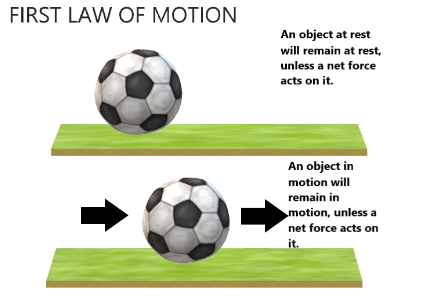
The football in the first image is placed on the smooth surface of the flat ground. It will not move unless a physical force is applied to it horizontally.
In the second image, the football tends to move if an external force is applied, say if someone kicks it horizontally. The ball also starts moving in the direction of the force that has been applied to it. In order to change their state, some physical force is required. Inertia is nothing but the force that keeps objects in rest or moving in a direction unless another force changes its state.
Example 2:
A Passenger in a Car
When a car suddenly stops, passengers lurch forward because their bodies continue to move forward due to inertia.
Some of the examples which support this law are,
- When the brakes of a vehicle are applied quickly, the passenger will be thrown forward due to the presence of inertia. Inertia tries to keep the passenger moving. This is the reason why it is recommended to wear seat belts while travelling by vehicle.
- A roller coaster uses the principle of inertia. It continues to move in the same direction at a constant speed until the tracks act as an external force that changes its direction.
Application of First Law of Motion
Some of the applications of the first law of motions are-
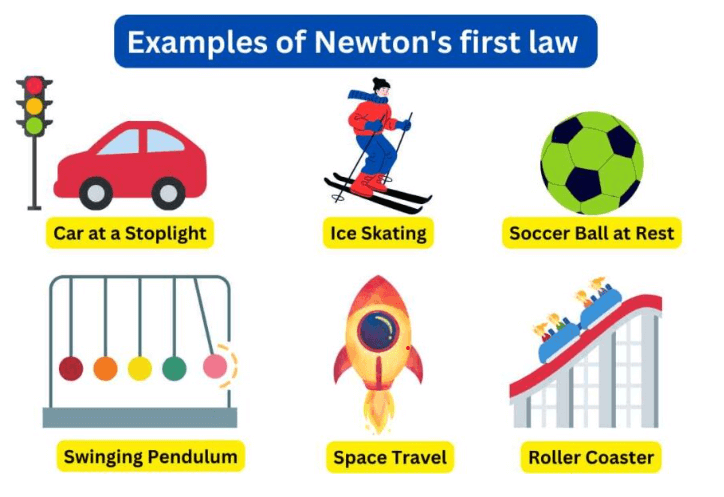
Traveling in a Bus: You would have felt like a jerk while traveling on a bus. The passengers standing in a moving bus experience a sudden forward fall when the driver applies the brakes, this sudden forward fall is due to inertia of motion. Similarly, when a speeding bus stops suddenly, then the body moves forward because the lower part of the body is at rest and the upper part of the body tends to remain in motion. Hence, this causes the passengers to feel a forward push.
Moving Train: When the train is moving at a uniform speed and the ball is tossed into the air, it goes up and then comes down straight in your hand because it has inertia.
A Carpet is Beaten to Remove Dust: When the carpet is beaten by the stick, the dust particles start to fall off because as the carpet is beaten, it moves backward and forward, that is, it comes into motion, but the dust particles continue to remain at rest. This example again explains the law of inertia, the tendency of a body to remain in its initial state.
A spacecraft traveling in space: In the vacuum of space, where there is no significant external force, a spacecraft can maintain its motion indefinitely. Once launched, it will continue moving in a straight line at a constant velocity, as there is no friction or air resistance to slow it down.
Fruits and Leaves Fall Off on Shaking Tree Branches: When the tree branches are shaken the fruits or leaves on the trees start to fall off suddenly. As we know when the tree branches are shaken, it comes into a state of motion but the leaves and fruits continue to stay the same due to the inertia of rest and hence they fall down.
Newton’s First Law of Motion, encapsulating the concept of inertia, is a cornerstone of classical mechanics and it is one of the important topics in Physics. By understanding this fundamental principle, we gain insights into the behavior of objects in motion and at rest. From our everyday experiences to technological advancements and space exploration, the applications of this law are vast and diverse. By appreciating Newton’s First Law, we unlock a deeper understanding of the world around us and empower ourselves to comprehend the forces that shape our physical reality.
| Related Links | |
| Newton’s Laws of Motion | Ohm’s Law |
| Kepler’s law | |

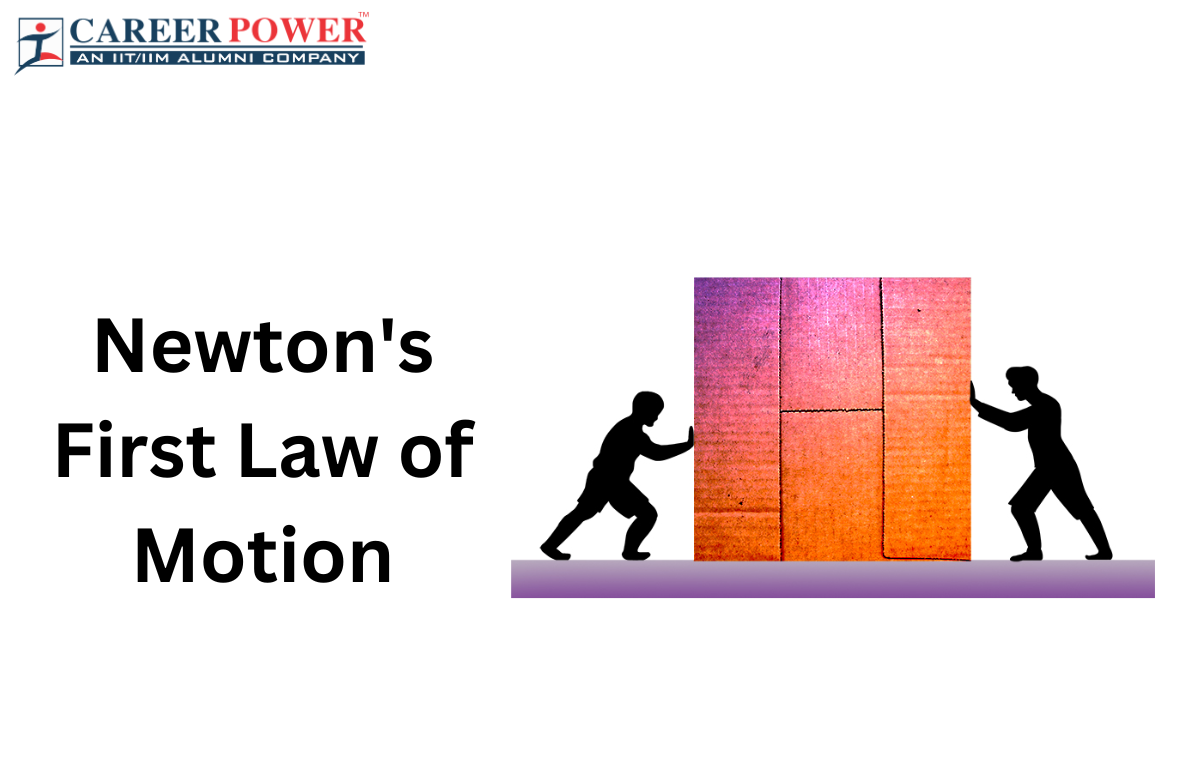

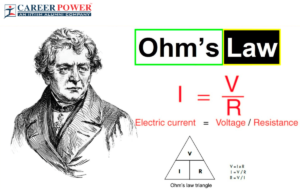 Ohm's Law: Definition, Formula, Limitati...
Ohm's Law: Definition, Formula, Limitati...
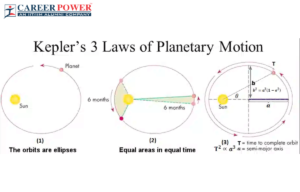 Kepler's Laws of Planetary Motion: First...
Kepler's Laws of Planetary Motion: First...
 Newton’s Laws of Motion (3 Laws) Defin...
Newton’s Laws of Motion (3 Laws) Defin...













